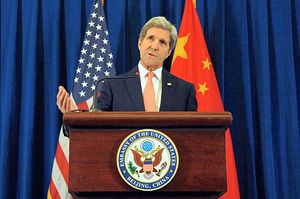Editor’s Note: This is the second article in a two-part series on U.S. strategy and statecraft. The first article, which is on U.S. strategy, is available here.
Americans – both elites and the public – are currently engaged in a heated debate about the future direction of U.S. foreign policy. As we outlined in our previous piece, the country faces a long list of strategic challenges. Furthermore, past experience has demonstrated that even when an administration succeeds in designing a grand strategy, the best-laid plans often go awry when it comes time to turn policy into practice. U.S. strategists should therefore ensure that any effort to address today’s strategic challenges examines American statecraft in order to ensure that the country has the right mix of existing and new tools to implement U.S. policy. The six most pressing statecraft challenges are as follows:
First, the United States suffers from a long-standing civilian response gap. For the last 20 years, every conflict America has tried to address– from the Balkans to Afghanistan to the Arab Spring – has exposed a gaping hole in U.S. statecraft. Both the State Department and USAID lack the capability needed to strengthen civilian institutions either before, during, or after conflict. Despite a bipartisan policy consensus in its favor, funding for capacity building rarely, if ever, makes it through the budget process.
Second, the military tool of statecraft faces a rapid evolution as a result of dual challenges. For the first time in decades, the military finds itself trying to manage a narrowing of its capabilities without a commensurate narrowing of its responsibilities. In addition, game-changing technologies such as cyber, synthetic biology, distributive manufacturing and autonomous systems have triggered tectonic shifts in the security environment. For example, a greater share of defense innovation now originates in the private sector than ever before, posing major challenges for acquisition and the management of technology transfer.
Third, new and revitalized statecraft tools present both opportunities and challenges. New tools, such as unmanned systems and offensive cyber capabilities, leave policymakers conflicted. On one hand, the United States can take short-term advantage of these technologies without the constraints of international norms. In doing so, however, Washington risks seeing these new technologies proliferate without international frameworks negotiated with America in the lead. Meanwhile, America’s economic statecraft struggles to find a definition beyond sanctions, especially as Congress seems determined to stall regional trade deals.
Fourth, the United States’ ability to shape outcomes in international organizations is diminishing rapidly. A number of factors are behind this change, including: rising powers’ predilection to act as spoilers, Congress’ virtual ban on new treaties or international agreements, and the fact that many international organizations have simply aged out of their original structures, leaving them ill-equipped to meet today’s security challenges. Revamping these organizations will be essential to upholding the core components of the international order America built after World War II.
Fifth, U.S. public opinion – a key factor for statecraft in a democracy – holds contradictory positions on U.S. global engagement. A string of opinion polls show the American public has a strong desire to avoid further military entanglements. Yet at the same time, polls show strong public support for economic engagement with the rest of the world, and a desire to exert leadership globally. The public appears to be in search of a compromise between doing less in the world and maintaining U.S. supremacy.
Sixth, the U.S. government has a limited ability to assess external threats, accurately determine levels of risk and then prioritize efforts. Better risk assessment would not try to predict the future; it would test assumptions about risks in the world in order to derive more rigorous conclusions. Fewer resources and growing public skepticism towards U.S. action abroad necessitates better risk management practices across the entire national security bureaucracy.
Without improved statecraft tools, U.S. policymakers will continue to see strategic plans run aground on implementation. Conversely, revitalized tools can support renewed U.S. global leadership that is both more credible and more effective.
Julianne Smith is senior fellow and director of the strategy and statecraft program at the Center for a New American Security. Previously, she served as deputy national security advisor to the vice president. Jacob Stokes is the Bacevich fellow at CNAS. This piece is based on their new CNAS report, “Strategy and Statecraft: An Agenda for the United States in an Era of Compounding Complexity

































